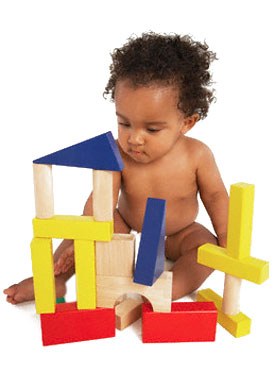Okay a lot of this information can also be found at Joe Bower's excellent blog. However I am compelled to share my ideas on all of this. If you are working in an early childhood environment or a parent to a young child, this should make your heart race: Why Preschool Shouldn't Be Like School by Alison Gopnik.
I am an ECE specialist and parent to a preschooler. He just turned 3 in January and I have already been asked, by a professional, if he has started reading yet. I promptly replied with another question: Why does a three year old need to read? Okay, I admit that it was completely rhetorical. I've just reached this point. Several of my friends have been swept up in this current of schooling babies, literally from birth, and frankly I don't understand it. I've even endured long emails from friends trying to convince me of the Your Baby Can Read program, with the argument that they will have a head start, a one-up if you will, on their peers when they start school (if you want to know my stance on this, see my Redshirting post below). This program is equivalent to Khan Academy's approach, just targeted to a younger audience. Am I the only one that finds this disturbing? In the words of Sir Ken Robinson, "Kindergarten starts in Kindergarten".
What I love about Gopnik's article is how she reminds us of the importance of creativity, play, and curiosity. Something as simple as faking our own curiosity and wonderment can become a pedagogical skill. I would argue that, by way of demonstrating how school is a place for curiosity to live out, we help children continue to engage in their natural inclinations to learn, discover, and question. Alternatively, by schooling them we can squash that creativity and natural curiosity, limiting it to an extra-curricular activity. Is all this worth having your child top of his/her Kindergarten class (if reading -decoding, not necessarily comprehension- is even of the utmost value there)?
This:

(image source)
Or this:

(image source)
What do you choose? What would they choose?
Maybe the article should be called 'Why School Shouldn't Be Like School'.
I am an ECE specialist and parent to a preschooler. He just turned 3 in January and I have already been asked, by a professional, if he has started reading yet. I promptly replied with another question: Why does a three year old need to read? Okay, I admit that it was completely rhetorical. I've just reached this point. Several of my friends have been swept up in this current of schooling babies, literally from birth, and frankly I don't understand it. I've even endured long emails from friends trying to convince me of the Your Baby Can Read program, with the argument that they will have a head start, a one-up if you will, on their peers when they start school (if you want to know my stance on this, see my Redshirting post below). This program is equivalent to Khan Academy's approach, just targeted to a younger audience. Am I the only one that finds this disturbing? In the words of Sir Ken Robinson, "Kindergarten starts in Kindergarten".
What I love about Gopnik's article is how she reminds us of the importance of creativity, play, and curiosity. Something as simple as faking our own curiosity and wonderment can become a pedagogical skill. I would argue that, by way of demonstrating how school is a place for curiosity to live out, we help children continue to engage in their natural inclinations to learn, discover, and question. Alternatively, by schooling them we can squash that creativity and natural curiosity, limiting it to an extra-curricular activity. Is all this worth having your child top of his/her Kindergarten class (if reading -decoding, not necessarily comprehension- is even of the utmost value there)?
This:

(image source)
Or this:

(image source)
What do you choose? What would they choose?
Maybe the article should be called 'Why School Shouldn't Be Like School'.
